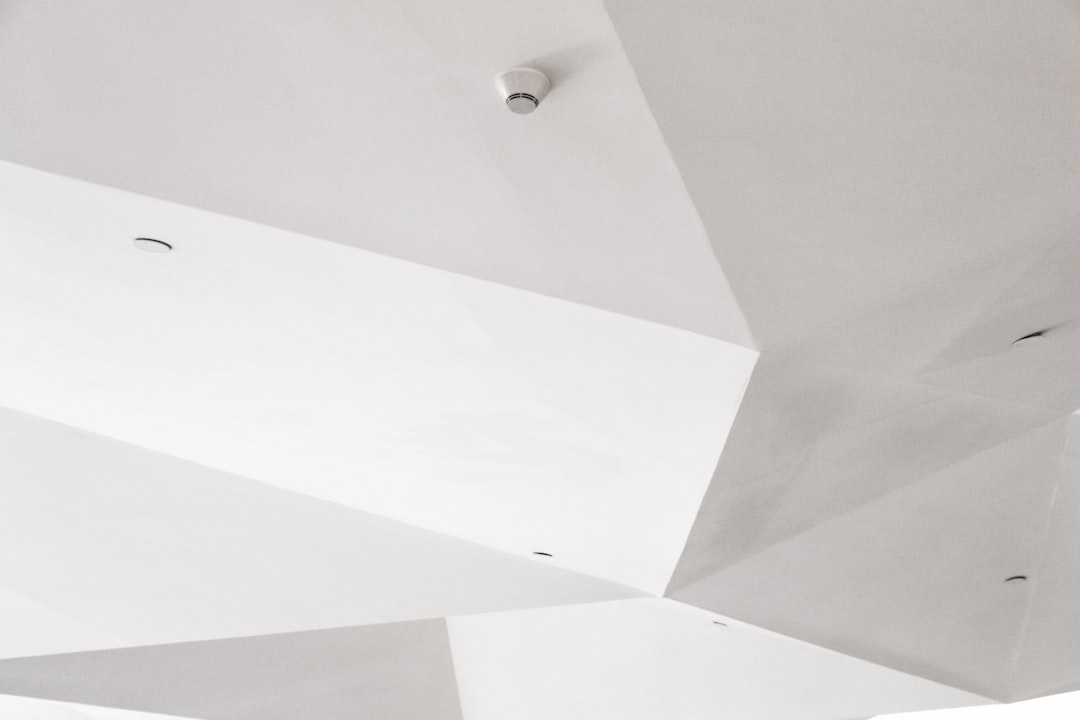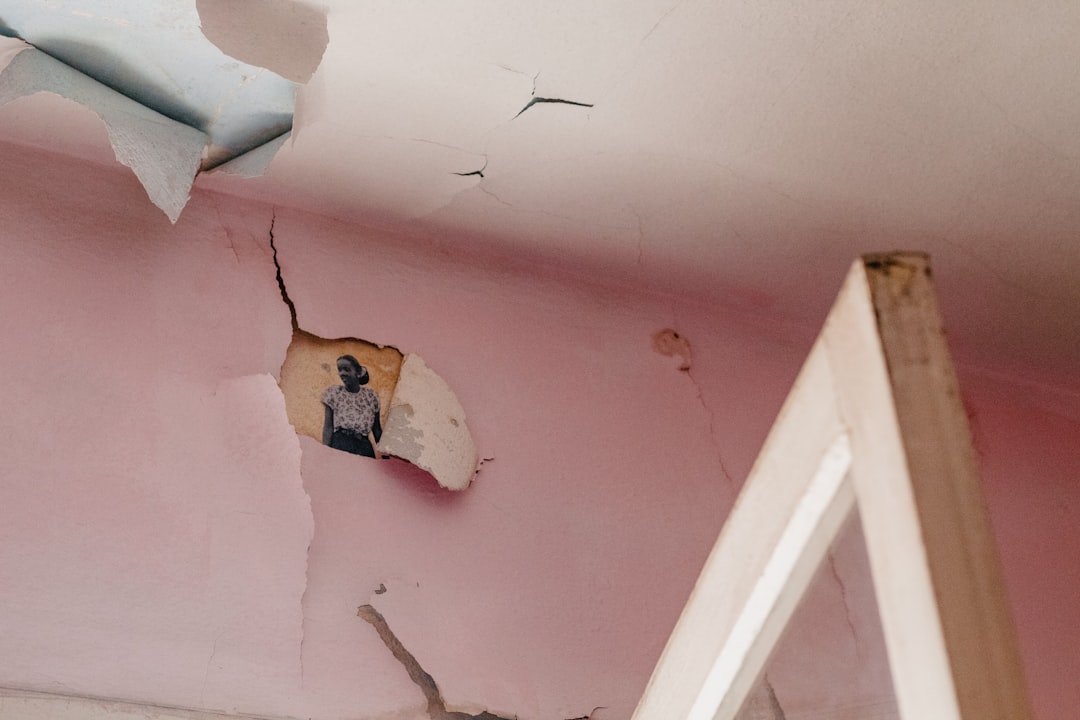

Engage prospects with a scan and streamline customer engagement with FREE QR code marketing tools by Sona – no strings attached!
Create a Free QR CodeFree consultation

No commitment

Engage prospects with a scan and streamline customer engagement with FREE QR code marketing tools by Sona – no strings attached!
Create a Free QR CodeFree consultation

No commitment
The ceiling repair services industry faces unrelenting pressure to deliver speed, accuracy, and reliability from the field to the front office and across every point of the customer journey. Persistent reliance on fragmented paper records, phone-based scheduling, or one-off email follow-ups can cause crucial job milestones or high-potential customers to fall through the cracks. Technician communication is frequently delayed, job documentation goes missing, and customers are left waiting on updates or clear next steps after each service interaction.
Today's ceiling repair customers expect fast fixes and demand instant access to their warranty details, transparent billing, seamless claim submission, and responsive support. This creates a widening gap between analog service processes and modern expectations.
QR codes offer a practical, scalable approach for linking every physical service moment such as a repair quote, technician badge, invoice, or on-site signage directly to digital resources. With QR codes, service portals, instructional videos, checklists, and feedback forms can move customers and jobs forward without delay, ensuring a more streamlined, efficient customer experience.

Ceiling repair operations often struggle with missed information, incomplete handoffs, and lost paperwork, slowing down field response and leaving high-value prospects untracked. Analog workflows like paper checklists or job logs make it easy for service details or customer insights to be missed or siloed in the field. Digital QR code strategies connect all service documents from field tickets to training guides directly to live resources and automatically log these interactions, reducing errors and keeping teams synchronized.
Start by mapping each physical artifact used in your operation to a digital action. Printed quotes can jump to interactive estimates and financing applications. Work order forms can link to on-site photo capture and standardized damage assessment templates. Even ladder tags, safety placards, and supply bins can link to bite-size safety refreshers or installation guides. Where a technician once kept binders or called a supervisor for instructions, a single scan now surfaces the exact checklist, video, or policy needed to proceed with confidence.
Newer solutions let every scan trigger workflows that keep the job moving. A code on the job site board can post documentation to your CRM, time stamp progress for supervisors, and send a text update to the customer. The result is fewer phone calls, fewer errors, and a higher standard of accountability across every ceiling repair.

One of the biggest operational challenges in ceiling repair is the lack of visibility into who is engaging with your traditional print assets, whether that is a repair estimate left behind, an on-site sign, or a customer handout. Without fast, digital feedback loops, businesses often fail to capture new leads, miss signals of customer intent, and leave revenue on the table. QR codes close this gap by transforming static materials into interactive touchpoints that guide customers to the next best action and give you measurable data in return. For broader marketing context, see this QR marketing guide.
QR codes are also frictionless for customers and technicians. There is no app to download and no login required to view a warranty, upload a photo, or book a return visit. On the operations side, QR codes can be dynamic, so you can update the destination when workflows change or content needs to be refreshed. Combined with analytics, each scan tells you which message worked, where it worked, and who needs follow-up.
Industry leaders use these data-rich interactions to prioritize resources, follow up at the right moment, and optimize marketing spend. QR codes strengthen consistency of messaging across the buyer’s journey, from first inspection to final invoice and subsequent referral.

Ceiling repair businesses have historically found it hard to deliver the right guidance or collect feedback at precisely the moment a technician or customer needs it. Paper instructions are ignored or misplaced, manual feedback forms remain incomplete, and critical touchpoints are overlooked. QR codes solve these problems by packaging the right digital experience into any physical surface you already use.
When selecting a format, think about the action you want the user to take and the environment in which they will scan. A QR code on a technician badge should save contact details or verify identity. A code inside a crawlspace should open to a short checklist that loads quickly, even with poor connectivity. A code on an invoice should capture payment or initiate warranty registration in one tap.
Dynamic codes shine when you need scan tracking or content updates without reprinting. Static codes are better for long-lived, compliance-focused instructions like safety procedures that rarely change. With the right mix, you can deliver stable guidance where needed and maintain flexibility where content evolves.

Ceiling repair services can lose upsell, cross-sell, or referral opportunities when client engagement signals go unnoticed or communication touchpoints are uncoordinated. QR codes provide a way to surface these signals and activate valuable prospects who might otherwise remain dormant. Think of every printed item, every surface on a job site, and every leave-behind as a chance to prompt action and capture intent data. See practical examples in home repair QR.
By deploying QR codes widely but intentionally, you connect field operations with sales and marketing. Scans tell you which recommendations resonate, which neighborhoods show patterns of damage, and which crews drive the most referrals. Over time, this informs where to expand services, which offers to scale, and how to tailor messaging.
Each of these placements transforms one-way communications into interactive, data-driven engagement. They also create a repeatable method for capturing and acting on demand that might otherwise be invisible.

Missed documentation or slow claims processing frustrate customers and drive up costs. They also elongate the sales cycle for ceiling repair firms, especially when insurers are involved or when multiple trades must coordinate. QR codes offer a direct path to consistent documentation, faster approvals, and better coordination between field and office.
Consider the points of friction that occur during a typical ceiling repair workflow. The initial inspection needs photo evidence and measurements documented in a consistent format. After a proposal is accepted, materials must be ordered and schedule changes communicated quickly. During the job, supervisors want to see status updates without waiting for end-of-day reports. After completion, warranties and feedback should be captured immediately while the experience is fresh. QR codes can power each of these steps.
Each workflow minimizes paperwork, keeps teams aligned, and builds a reliable data trail that benefits operations, marketing, and finance. Over time, your organization can measure how these QR-powered steps shorten cycle times, improve cash flow, and elevate customer satisfaction scores.
Many ceiling repair firms struggle to reconnect with high-intent prospects who research services or review quotes but do not immediately convert. Traditional CRMs often miss these anonymous or lightly engaged leads, especially when the initial touch occurs through print materials or site signage. QR campaigns turn every scan into a signal that you can segment and act on.
By deploying multiple QR codes across touchpoints, you can infer intent from context. A scan on a storm-damage flyer indicates urgency and insurance involvement. A scan on a bathroom remodeling brochure suggests planned, non-urgent work. A scan from an apartment building lobby points to property manager needs rather than homeowner concerns. These signals help you deliver follow-up that matches the moment.
Feed these segmented audiences into your CRM and ad platforms to trigger timely email drips, SMS nudges, or localized ads. With Sona QR, scan data can sync automatically to tools like HubSpot, Salesforce, and Meta Ads, enabling behavior-driven retargeting that outperforms generic campaigns. For CRM setup, see HubSpot integration in Sona’s blog post “Integrate Sona with HubSpot CRM: Unify Data to Supercharge Your Demand Generation.”
Disconnected campaigns lead to inconsistent messaging, duplicated effort, and wasted spend. Customers get confused when the quote they received offline does not match the promotions they see online or when there is no simple way to move from a brochure to booking. QR codes are the connective tissue that unify print, digital, and field-based campaigns, creating a cohesive experience from first impression to signed work order.
Think of QR codes as a routing system. They direct a person who encounters a physical asset to the right digital next step in context. They also turn formerly unmeasurable channels into data sources you can evaluate alongside search, social, and email. With consistent UTM tagging and dynamic routing, you can keep your messaging in sync and your analytics aligned. For strategy, see offline attribution in Sona’s blog post “The Essential Guide to Offline Attribution: Maximizing ROI Through Offline Channels.”
By syncing QR scan data with broader campaign analytics, you gain real-time attribution and consistent messaging across every touchpoint. Platforms like Sona QR make it simple to manage codes, monitor performance, and connect scan activity to your downstream systems.
A strong QR program is not a one-off code on a brochure. It is a coordinated set of placements, destinations, and workflows that move a customer from offline interest to booked job and beyond. See QR codes in marketing for campaign ideas that support both acquisition and operations.
Use the steps below to plan, deploy, and continuously improve your QR initiatives in ceiling repair. Involve operations, marketing, and field teams early so that each code supports both customer needs and internal processes.
A disciplined approach compounds results over time. As your team builds comfort with the tools and workflows, expand to additional placements and more advanced automations that connect scans to CRM updates, notifications, and tailored retargeting.
It is common for ceiling repair businesses to lose track of which marketing funnel or service touchpoint actually drove a sale or claim submission. A homeowner may scan a flyer, speak with a technician, and later click an email. Without a unified view, it is difficult to know what worked and where to invest. Tracking every QR scan gives full-funnel visibility from first engagement by asset, job type, or geography to the touchpoints that convert prospects into paying customers or advocates.
Integrating QR data with the CRM lets you unify anonymous and known interactions. When a scan triggers a form fill or a booking, you can stitch that event to later actions such as approvals, payments, or reviews. The payoff is better forecasting, clearer attribution, and smarter resource allocation across teams.
Sona QR captures real-world engagement and Sona.com turns that engagement into insights you can act on.
Scaling QR programs requires attention to both human behavior and technical details. Your customers and technicians need to know what to expect when they scan. Your analytics stack needs to capture the right data. Your workflows should trigger the next action automatically so no one has to remember to follow up.
Start by standardizing your approach to code creation and placement. Maintain a library of approved CTAs, destination templates, and UTM conventions. Regularly audit active codes to ensure they still point to the right resources and that content is up to date.
Each recommendation shifts ceiling repair from reactive and manual to connected and proactive. Over time, your organization will build a system where every engagement leaves a data trail, every data trail triggers the right next action, and every action improves customer outcomes.
QR codes are increasingly serving as the operational backbone for ceiling repair providers seeking to eliminate analog inefficiencies and deliver reliable, transparent customer experiences. Whether synchronizing field documentation, speeding up insurance claims, or nurturing post-job follow-up, QR codes provide both operational clarity and marketing agility. When thoughtfully integrated into technician and customer workflows, they turn offline moments into measurable digital outcomes and keep teams aligned around a single source of truth.
Ceiling repair services are at a pivotal moment, facing mounting demands for speed, data-driven transparency, and efficiency. The shift from manual, fragmented workflows to streamlined, digital-first strategies is no longer optional. Strategic deployment of QR codes lets service organizations accelerate technician support, ensure every high-value lead is pursued, and prompt meaningful customer engagement while tracking performance from first contact to final invoice. With a platform like Sona QR to manage codes and Sona.com to attribute revenue, providers can connect the dots across the buyer journey, build resilience in the face of demand spikes, and convert more opportunities into lasting customer relationships. Sona is an AI-powered marketing platform that turns first-party data into revenue through automated attribution, data activation, and workflow orchestration. Start creating QR codes for free at Sona QR.
QR codes have transformed ceiling repair services from traditional, time-consuming processes into efficient, data-driven solutions that empower technicians and enhance customer satisfaction. By integrating QR codes, service providers can streamline job tracking, provide instant access to repair histories, and deliver seamless communication—all while capturing valuable insights that improve operational efficiency and client trust. Imagine technicians instantly accessing detailed repair instructions on-site, reducing errors and downtime, and customers experiencing faster, more transparent service.
With Sona QR, you can create dynamic, trackable QR codes that update in real-time without the need for reprinting, connecting every scan to actionable data that drives smarter decision-making. From managing work orders to improving technician performance, Sona QR turns every code into a powerful tool for growth and service excellence. Start for free with Sona QR today and elevate your ceiling repair services into a smarter, more responsive business.
Choose a ceiling repair service that offers fast, accurate, and reliable communication, transparent billing, seamless claim submission, and uses modern digital tools like QR codes to keep customers informed and jobs on track.
Common causes of ceiling damage include leaks from storms or plumbing issues, moisture buildup, and structural wear that often require inspection and timely repair.
The article does not specify the average cost of ceiling repair services.
Prevent ceiling damage by following safety checklists, maintaining proper ventilation, addressing leaks promptly, and using QR code-linked guides and reminders for regular inspections and maintenance.
Signs you need ceiling repair include visible damage, moisture or stains, sagging areas, and structural issues identified during inspections or reported by technicians.
QR codes link physical service moments like repair quotes and invoices to digital resources, enabling instant access to repair guides, warranty details, claim submissions, and customer feedback, which streamlines communication and accelerates job completion.
Place QR codes on work orders, technician badges, toolkits, invoices, on-site signage, and equipment packaging to provide quick access to checklists, safety guides, job status, and customer support.
Common QR code formats include web links for guides and scheduling, forms for surveys and documentation, vCards for contact info, SMS or email triggers for updates, and app downloads for advanced service features.
Companies can track scan frequency, location, and engagement to identify effective communications, optimize workflows, prioritize follow-ups, and measure marketing ROI across channels.
QR codes simplify insurance claims by enabling clients to submit damage reports, photos, and invoices digitally, accelerating approvals and reducing rejections due to incomplete submissions.
Integrating QR codes connects offline materials like brochures and signage with digital actions, unifies messaging across channels, captures leads in real time, and improves attribution and customer engagement.
By deploying QR codes across touchpoints, businesses can segment leads by job type, customer intent, location, and role, enabling personalized follow-up and targeted marketing campaigns.
Define focused goals, select appropriate QR code types, design and test codes for real-world conditions, deploy on key assets, train teams, and track analytics to continuously refine and improve engagement.
QR codes provide technicians with instant access to repair checklists, digital guides, training materials, and job details, reducing search time, errors, and improving response speed.
Tracking and analytics enable businesses to monitor scan data by device, location, and campaign source, unify offline and online interactions, optimize resource allocation, and attribute revenue accurately.
Use QR codes to automate follow-up actions, capture customer engagement signals in real time, and integrate scan data with CRM systems to ensure no leads or job milestones fall through the cracks.
Use Sona QR's trackable codes to improve customer acquisition and engagement today.
Create Your FREE Trackable QR Code in SecondsJoin results-focused teams combining Sona Platform automation with advanced Google Ads strategies to scale lead generation

Connect your existing CRM

Free Account Enrichment

No setup fees
No commitment required

Free consultation

Get a custom Google Ads roadmap for your business






Launch campaigns that generate qualified leads in 30 days or less.
